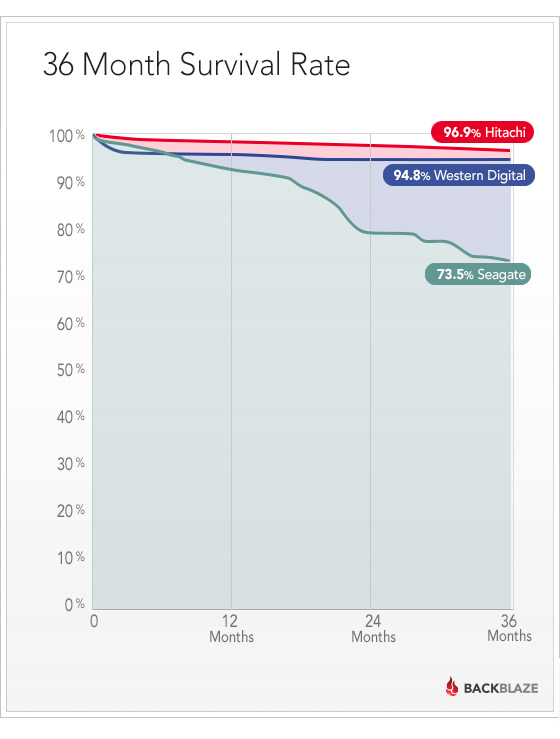1TB Western Digital Blue 7200 RPM - $44.99 free shipping (and no tax in most states).
A steal!
Great for a scratch disk!
http://www.tigerdirect.com/applications/SearchTools/item-details.asp?EdpNo=3232686&CatId=2459
+ Reply to Thread
Results 1 to 16 of 16
-
-
Nice! You should mention it's not a mail-in coupon. I hate mail-in coupons and will ignore them.
-
Same deal at Amazon.com:
www.amazon.com/Blue-Desktop-Hard-Drive-7200/dp/B0088PUEPK/ -
-
You're right, it's back for me now too. I swear it wasn't there earlier today. Maybe it was too early for me.
In any case, 1TB is too small to be useful and too expensive for me. I usually buy drives at the sweet spot (currently 3 or 4 TB drives) for storage then use the older drives for scratch. -
-
-
I am a WD fan so I use them most of the time.
I use the slower but more reliable WD Red drives for storage, I agree that 3 to 4TB is the sweet spot for those. HGST is good too but there is so much grey market stuff going on with those drives you sometimes don't know what you get.
I use the faster but less reliable WD Blue drives for scratch. Scratch does not take that much space so a 1TB is great. Also when they fail, and they will fairly quickly if you capture GBs of video daily you are out $44 as opposed the price of a 3TB or 4TB drive fail.
I use the very fast WD Black drives as a work drive, they are advertised as very reliable but in my experience you cannot expect any drive to last longer than a year if you use them for heavy video or image editing.
I am at a point now where I may want to experiment with SDDs for work drives, obviously they are fast but I am not sure if they are ready for heavy multi-GB copy, update and delete operations.
Obviously I run the OS on a SDD. I am waiting for the next generation M.2 drives running PCIe 4x, should give a sequential throughput increase of four fold compared to a standard SSD. -
You don't seem to have much luck with hardware. I have four 1TB WD Black rives in this PC. CrystalDiskInfo says they've all be running for just under a year and a half in total. I'm not sure what "heavy" video editing involves, but I've sometimes wondered.... the platters keep spinning whether data is being read, written or not. It's only the read arm/head that needs to move around.
Google decided there's very little correlation between utilisation and a drive's life expectancy.
From the Google "failure trends" pdf:
Overall, we expected to notice a very strong and consistent correlation between high utilisation and higher failure rates. However our results appear to paint a more complex picture. First, only very young and very old age groups appear to show the expected behaviour. After the first year, the AFR of high utilisation drives is at most moderately higher than that of low utilisation drives. The three-year group in fact appears to have the opposite of the expected behaviour, with low utilisation drives having slightly higher failure rates than high utilisation ones. -
Yes I am familiar with that report, it's nice they published it:
http://www.google.com/url?sa=t&rct=j&q=&esrc=s&source=web&cd=1&ved=0CCIQFjAA&url=http%...85076809,d.eXY
By the way, this made me decide never to buy a Seagate disk anymore:

Source:
http://arstechnica.com/information-technology/2015/01/hard-disk-reliability-examined-o...e-is-alarming/ -
What was even more interesting was the graph over time:

Most of the WD failures were within the first few months. After that they were even more reliable than the HGST drives. -
OK, I've only got an anecdotal evidence sampling, but in my experience I would concur with the above. Even if they're on sale for slightly cheaper per TB, I'm now steering clear of Seagates.
-
Note the drive failure data is from Blackblaze, a cloud storage company. They use consumer grade drives and the drives get very heavy use.
-
Seagate also has a very crappy replacement policy too. Once I had a Seagate drive that failed within the first year which was replaced with a new drive, and Seagate paid return shipping of the drive being replaced. A few years later another Seagate drive failed in about 18 months which was replaced with a recertified drive because it's their policy to replace drives under warranty after the first year with recertified drives, and I had to pay $10 return shipping on the drive being replaced. Does anybody know if Western Digital has such a replacement policy?
Now the recertified drive works okay all be it at very much slower speed. This reduced speed isn't noticed that much in daily use, but it is painfully revealed when Defrag is run and when creating and restoring images. My Win8 system takes just 5 minutes to backup or restore images using Seagate Discwizard when reading from or writing to an original Seagate drive that was bought around the time as the drive that was replaced, but the same backup or restore takes 38 minutes when reading from or writing to the recertified drive. That's over 7 times slower!



 Quote
Quote

